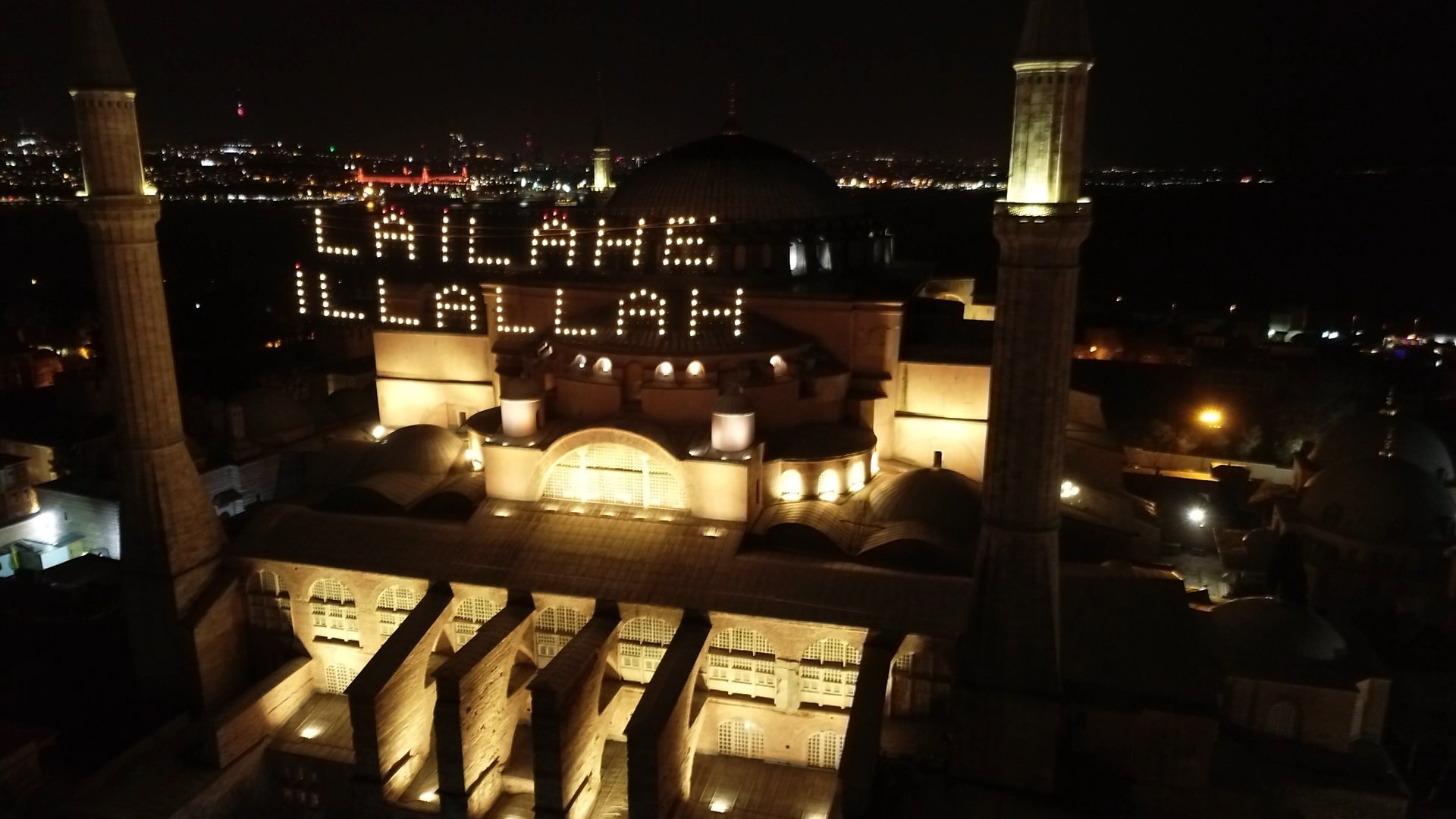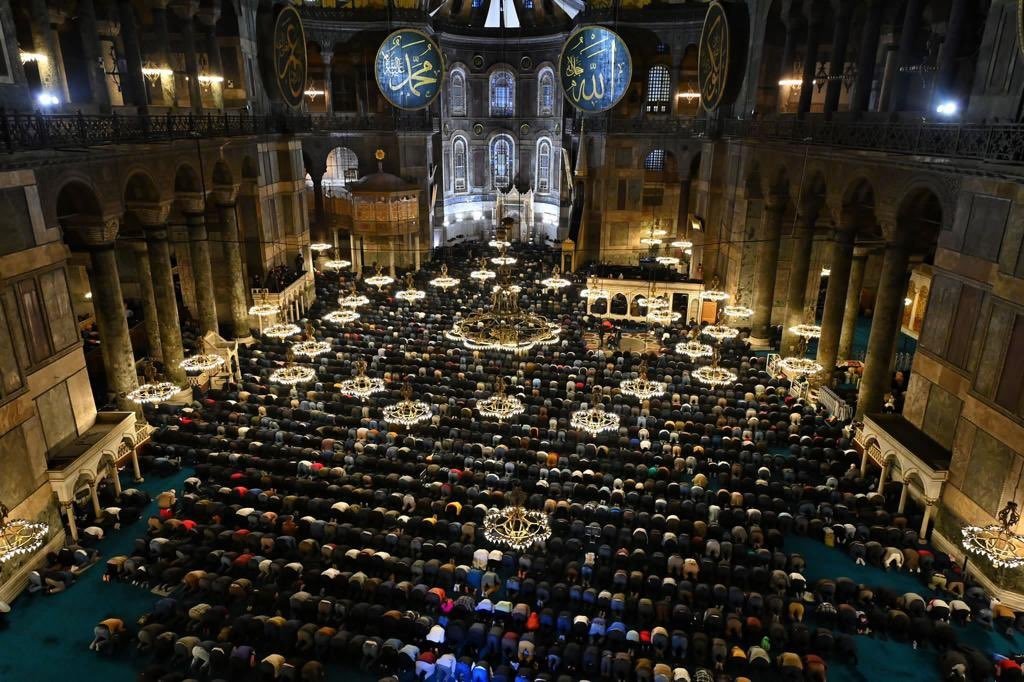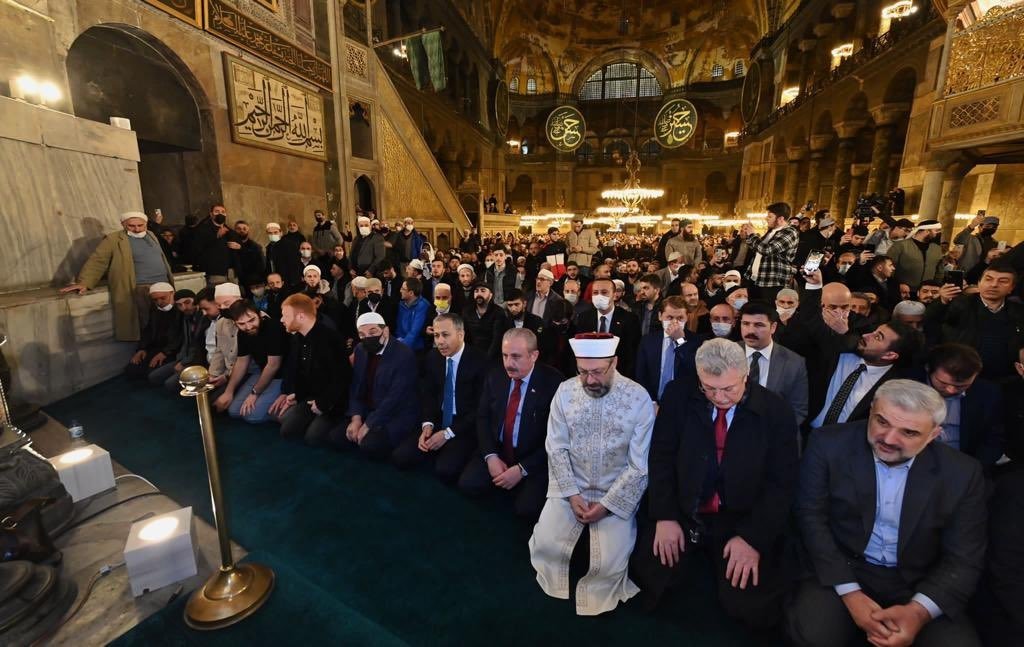
The English website of the Islamic magazine - Al-Mujtama.
A leading source of global Islamic and Arabic news, views and information for more than 50 years.
At least eight miners were killed and more than a dozen injured following an explosion at a coal mine in southern Serbia, state media reported Friday.
The explosion occurred at around 6 a.m. local time (4 a.m. GMT), causing the mine to collapse near the town of Aleksinac, according to Radio Television of Serbia (RTS).
"We have so far hospitalized 18 injured miners. Three of them are in serious condition," said Goran Vidic, the director of the Aleksinac hospital.
Two miners were also being treated in the nearby city of Nis, RTS reported.
At the time of the accident, at least 49 miners were believed to have been working in the mine. First responders dispatched to the scene managed to rescue about a dozen people, however, several remained trapped, according to RTS.
Goran Vidic, head of the local hospital, was quoted as saying all nonessential surgery had been canceled and some patients had been discharged to make room for casualties.
"The situation here is difficult, relatives are here, people are upset," Vidic said.
The Aleksinac region is an important mining basin in Serbia, where the energy sector remains heavily reliant on coal for power. The area has also been the scene of several similar tragedies in the past.
In November 1989, 91 miners were killed following a fire caused by human error./agencies
Hagia Sophia Grand Mosque in Istanbul held its first Tarawih prayer in 88 years late Friday, a special evening prayer during the Muslim fasting month of Ramadan.
A number of events for Ramadan will also be held at the mosque, which was converted into a museum in 1934 and regained its status as a mosque in 2020, when it was opened for worship on July 24 of that year.

As part of COVID-19 restrictions in Turkey, however, the mosque could not be used since the pandemic began due to the risk of infection.
But with most of the population vaccinated and the number of new cases and fatalities declining and recoveries increasing daily, Turkish authorities decided to reopen the mosque for Ramadan, the holiest month of the year for Muslims.

Hagia Sophia was built in the year A.D. 532. It was turned into a mosque in 1453 after the conquest of Istanbul.
It served as a church for 916 years and 86 years as a museum. But for most of its existence – from 1453 to 1934, or nearly 500 years – it served as a mosque.

In 1985, Hagia Sophia was added to the UNESCO World Heritage List.
Hagia Sophia is also among Turkey's top tourism destinations and remains open for domestic and foreign visitors./aa
The Sharia Sighting Board announced that Friday is the completion of the month of Sha’ban, and that tomorrow, Saturday will be the first day of the blessed month of Ramadan, after it was confirmed that moon sighting board had seen the crescent moon of the holy month.
The Shariah Sighting Board had held a meeting a short time ago to seek to sight the crescent of the month of Ramadan./Arab Times
An Islamophobic Dutch group is planning to hold deliberately provocative barbecues near mosques over the next several weeks, coinciding with the Muslim holy month of Ramadan, in which most believers fast from sunrise to sunset.
According to PEGIDA, standing for “Patriotic Europeans Against the Islamization of West,” the barbecues will be held in front of mosques at the sunset fast-breaking time in 12 cities across the country, and they have applied for permits.
In years past, similar PEGIDA barbecues have featured the roasting of pork, a food prohibited under Islam.
The group argued that these events have not been allowed for two years due to the COVID-19 pandemic, but that now there is no obstacle to what they call the "Ramadan Barbecue Tour."
PEGIDA intolerance
Starting in 2014, the far-right Islamist PEGIDA held its first protest in Dresden, Germany with some 350 people, including 12 organizers.
Through early 2015 the number of protesters is said to have reached some 25,000 but later fell.
PEGIDA has inspired xenophobic groups both inside and outside Germany./aa
Pope Francis on Friday apologized to the representatives of Canadian indigenous peoples for the abuses suffered by the students of church-run residential schools in Canada, local media reported on Friday.
“I ask for forgiveness from God for this reprehensible conduct by some members of the Church,” Francis told an audience with the indigenous and Canadian bishops, Italian news agency ANSA reported.
“I am very pained, I join Canadian bishops in asking forgiveness of you,” the agency quoted the pope as saying.
The pontiff also announced an upcoming visit to Canada. “See you in Canada where I will be able to better express to you my closeness.”
The meeting of three indigenous groups – Assembly of First Nations, Metis, and Inuit – with the pope was slated for December 2021 but was canceled due to the emerging omicron variant of the coronavirus.
The groups have the same goal: to get a papal apology for the Catholic Church's role in running notorious Indian Residential Schools beginning in the 1820s through the 1990s when the last of 139 schools were closed.
Around 150,000 students were sent to the schools, at times taken from their families by force to eradicate the indigenous culture.
About 4,500 students died while some others were subjected to physical, sexual, and psychological abuse.
During the past year, more than 1,800 unmarked graves have been identified at various residential school sites across Canada.
About 60% were run by the Catholic Church and the rest by other Christian churches.
Apologies have been made by various individuals and groups representing the Catholic Church but Francis’ today's remarks are the first by a pope./aa
The majority of Turkish society is in favor of renewable energy, which is beneficial for economic development and increasing life quality, new research by Konda Research and Consultancy showed Friday.
The research was conducted in different villages and neighborhoods in 34 cities of Turkiye with 2,475 participants from different backgrounds and socio-economic conditions.
According to the Turkiye Climate Change Perception Report, 79% of the participants see renewable energy as a good opportunity for economic development and 75% of them favor renewables for increasing the country's exports.
When asked what source of electricity would they prefer if they had the chance to choose, 74% of the participants responded solar, while 66% wanted to choose wind. Only 8% and 5% of the participants, respectively, say coal and nuclear.
About 91% of the participants think phasing out thermal power plants and installing only solar and wind plants would have no negative impacts, while 75% of them is against nuclear power plant near their neighborhoods. This rate is 59% when it comes to coal plants.
Heatwaves and forest fires most evident results of climate change
Every three out of four people in Turkiye think that environmental pollution should not be endured for the sake of economic development and 83% of them say it is possible to successful economic development without harming the environment and nature.
A high majority, 94%, of the respondents agree that protecting the environment and nature is everyone's responsibility, while 70% of them say Turkiye should have more ambitious climate targets.
According to the participants, heatwaves, forest fires, and floods are the top results of climate change.
About 76% of them see heatwaves as the biggest and most evident result of climate change, while 69% and 62% of them see forest fire and floods as the most evident results, respectively.
According to the research, 64% of the participants think climate change will impact everybody equally. However, 35% and 27% of them think children and those in need will be impacted most, respectively. A 24% of them see villagers as the most disadvantageous group against the impacts of climate change.
About 50% of the participants see the government and the ministries as the responsible bodies for the solution to climate change, while 41% of them think major companies share this responsibility.
Every 9 out of 10 participants says they are eager to combat the impacts of climate change individually./aa
The Red Cross said Friday that one of its teams is on its way to the besieged Ukrainian port city of Mariupol to enable the safe passage of civilians amid the Russian war.
International Committee of the Red Cross (ICRC) spokesman Ewan Watson told a UN press conference that a convoy of three cars and nine Red Cross staff members is on its way to Mariupol to assist with the safe passage operation.
The Red Cross is in communication with warring Ukrainians and Russians on the final details of how tens of thousands of civilians stranded in the southeastern port city since the war began on Feb. 24 will be evacuated.
Humanitarian groups have been unable to reach Mariupol since Russian forces began bombing the city.
The Red Cross estimates that up to 100,000 civilians may try to evacuate, although it does not have exact figures.
‘Extremely complex’
"I do need to stress that this effort has been and remains extremely complex. There are a lot of moving parts, and not all the details are yet in place to ensure that this happens in a safe manner," said Watson.
"Today, we remain hopeful … but it's not yet clear that this will happen today."
He said if it happens, then the Red Cross's role as a "mutual intermediary" will lead the convoy out of Mariupol to another city in Ukraine.
So far, 54 buses are reported to be in the convoy, which could take tens of thousands of civilians away from the city.
The Red Cross was unable to confirm the city where the civilians will be taken since the Ukrainians and Russians must agree on it.
"Our presence puts a humanitarian marker on this movement of people, giving the convoy additional protection and reminding all sides of the civilian, nonmilitary, and humanitarian nature of this operation," said the Red Cross official.
"We are running out of adjectives to describe the horrors that residents in Mariupol have suffered. The situation is horrendous and deteriorating," he said.
Watson said allowing people to leave and letting aid supplies in is now a humanitarian imperative.
"The people of Mariupol have suffered weeks of heavy fighting with dwindling water, food, and medical supplies. Piecing together the safe passage convoy has been and remains extremely complex."
The spokesman underlined that the transfer and evacuation of people in danger should only take place if certain requirements are met, including the "voluntary consent of the people concerned."
According to some reports, Russian troops forced Ukrainian civilians to relocate to areas under their control.
Mariupol's mayor said on Monday that up to 160,000 civilians are stranded in the besieged Ukrainian city.
"Unfortunately, there are still a lot of people in Mariupol. The figure is over 100,000. According to our estimates, around 160,000 civilians are in the city," Vadym Boychenko said.
He described the Russian military's actions as a "genocide of people in Mariupol."
With no electricity, heating, or running water, the mayor said living in Mariupol is impossible./aa
Euro area annual consumer inflation refreshed its record, hitting 7.5% in March, according to provisional Eurostat data released on Friday.
The figure, much above than market forecast, was up from 5.9% in February, the statistical office of the EU said in its report.
In February, the main driver behind the high inflation rate was energy, which is expected to hit the highest annual rate in March at 44.7%.
This was followed by food, alcohol, and tobacco (5.0%), on-energy industrial goods (3.4%), and services (2.7%).
On a monthly basis, Eurozone inflation is projected to come in at 2.5% in March.
Eurostat refers to inflation as the change in the price level of consumer goods and services during a given period./aa
As the war in Ukraine enters its 37th day, 153 children have died as a result of Russian attacks, the Ukrainian Chief Prosecutor’s Office said on Friday.
Another 245 children were wounded by Russian forces, 859 education facilities damaged and 83 completely razed to the ground, the office said in a statement.
The Russia-Ukraine war, which started on Feb. 24, has been met with international outrage, with the European Union, US and UK, among others, implementing tough financial sanctions on Moscow.
At least 1,232 civilians have been killed in Ukraine and 1,935 injured, according to UN estimates, with the true figure feared to be far higher.
More than 4 million Ukrainians have also fled to other countries, with millions more internally displaced, according to the UN refugee agency./aa
Testing for COVID-19 is not a medical test exclusive to human beings, with scientists testing various animals throughout the world for several reasons – to learn about the trajectory of the virus, originating from animals, and how it might mutate in animals and bounce back on humans.
To administer this particular COVID-19 test, Todd Kautz had to lay on his belly in the snow and worm his upper body into the narrow den of a hibernating black bear. Training a light on its snout, Kautz carefully slipped a long cotton swab into the bear’s nostrils five times.
For postdoctoral researcher Kautz and a team of other wildlife experts, tracking the coronavirus means freezing temperatures, icy roads, trudging through deep snow and getting uncomfortably close to potentially dangerous animals.
They’re testing bears, moose, deer and wolves on a Native American reservation in the remote north woods about 5 miles (8 kilometers) from Canada. Like researchers around the world, they are trying to figure out how, how much and where wildlife is spreading the virus.
Scientists are concerned that the virus could evolve within animal populations – potentially spawning dangerous viral mutants that could jump back to people, spread among us and reignite what for now seems to some people like a waning crisis.
The coronavirus pandemic has served as a stark and tragic example of how closely animal health and human health are linked. While the origins of the virus have not been proven, many scientists say it likely came from bats to humans, either directly or through another species that was being sold live in Wuhan, China.
And now the virus has been confirmed in wildlife in at least 24 U.S. states, including Minnesota. Recently, an early Canadian study showed someone in nearby Ontario likely contracted a highly mutated strain from a deer.
"If the virus can establish itself in a wild animal reservoir, it will always be out there with the threat to spill back into the human population," said University of Minnesota researcher Matthew Aliota, who is working with the Grand Portage Reservation team.
E.J. Isaac, a fish and wildlife biologist for the reservation that's home to the Grand Portage Ojibwe, said he expects the stakes to get even higher with the start of spring, as bears wake from hibernation and deer and wolves roam to different regions.
"If we consider that there are many species and they’re all intermingling to some extent, their patterns and their movements can exponentially increase the amount of transmission that could occur," he said.
Into the wild
Their research is meant to ward off such unwelcome surprises. But it carries its own set of risks.
Seth Moore, who directs the reservation biology and environment department, recently almost got bitten by a wolf.
And they sometimes team with a crew from the Texas-based company Heliwild to capture animals from the air. One chilly late-winter afternoon, the men climbed into a small helicopter with no side doors that lifted above the treetops. Flying low, they quickly spotted a deer in a forest clearing. They targeted the animal from the air with a net gun and dropped Moore off.
The wind whipped at his face as he worked in deep snow to quickly swab the deer’s nose for COVID-19, put on a tracking collar and collect blood and other biological samples for different research.
The men capture moose in much the same way, using tranquilizer darts instead of nets. They trap wolves and deer either from the air or on the ground, and trap bears on the ground.
They knew of the young male bear they recently tested because they had already been tracking it. To get to the den, they had to take snowmobiles to the bottom of a hill then hike a narrow, winding path in snowshoes.
When Kautz crawled part-way into the den, a colleague held his feet to pull him out quickly if necessary. The team also gave the animal a drug to keep it sleeping and another later to counteract the effects of the first.
To minimize the risk of exposing animals to COVID-19, the men are fully vaccinated and boosted and get tested frequently.
The day after testing the bear, Isaac packed their samples to send to Aliota's lab in Saint Paul. The veterinary and biomedical researcher hopes to learn not just which animals are getting infected but also whether certain animals are acting as "bridge species" to bring it to others. Testing may later be expanded to red foxes and raccoons.
It's also possible the virus hasn't reached this remote location – yet. Since it’s already circulating in the wilderness of Minnesota and nearby states, Aliota said it's only a matter of time.
Looking for mutants
Close contact between humans and animals has allowed the virus to overcome built-in barriers to spread between species.
To infect any living thing, the virus must get into its cells, which isn't always easy. Virology expert David O'Connor likens the process to opening a "lock" with the virus' spike protein "key."
"Different species have different-looking locks, and some of those locks are not going to be pickable by the key," the University of Wisconsin-Madison scientist said.
But other locks are similar enough for the virus to enter an animal’s cells and make copies of itself. As it does, it can randomly mutate and still have a key that fits in the human lock. That allows it to leap back to humans through close contact with live animals, scientists believe.
Although spillback is rare, it only takes one person to bring a mutated virus into the realm of humans.
Some think the highly mutated omicron variant emerged from an animal rather than an immune-compromised human, as many believe. Virologist Marc Johnson of the University of Missouri is one of them, and now sees animals as "a potential source of pi," the Greek letter that may be used to designate the next dangerous coronavirus variant.
Johnson and his colleagues found strange coronavirus lineages in New York City sewage with mutations rarely seen elsewhere, which he believes came from animals, perhaps rodents.
What scientists are most concerned about is that current or future variants could establish themselves and multiply widely within a reservoir species.
One possibility: white-tailed deer. Scientists found the coronavirus in a third of deer sampled in Iowa between September 2020 and January 2021. Others found COVID-19 antibodies in a third of deer tested in Illinois, Michigan, New York and Pennsylvania. Infected deer generally have no symptoms. Testing in many other wild species has been limited or absent.
"It's possible that the virus is already perhaps circulating in multiple animals," said virology expert Suresh Kuchipudi of Pennsylvania State University, also author of the Iowa deer study. If unmonitored, the virus could leave people "completely blindsided," he said./Daily Sabah
Can it be stopped?
Ultimately, experts say the only way to stop viruses from jumping back and forth between animals and humans – extending this pandemic or sparking a new one – is to tackle big problems like habitat destruction and illegal wildlife sales.
"We are encroaching on animal habitats as we have never before in history," Aliota said. "Spillover events from wild animals into humans are, unfortunately, I think, going to increase in both frequency and scope."
To combat that threat, three international organizations – the United Nations Food and Agriculture Organization, the World Organization for Animal Health and the World Health Organization – are urging countries to make COVID-19 surveillance of animals a priority.
In Grand Portage, Aliota's collaborators continue to do their part by testing as many animals as they can catch.
With icy Lake Superior sparkling through the evergreens, Isaac slipped his hand beneath the netting of a deer trap. A colleague straddling the animal lifted its head off the snowy ground so that Isaac could swab its nostrils.
The young buck briefly lurched its head forward but kept still long enough for Isaac to get what he needed.
"Nicely done," his colleague said as Isaac put the sample into a vial.
When they were finished, they gently lifted the trap to let the deer go. It bounded into the vast forest without looking back, disappearing into the snowy shadows./AP